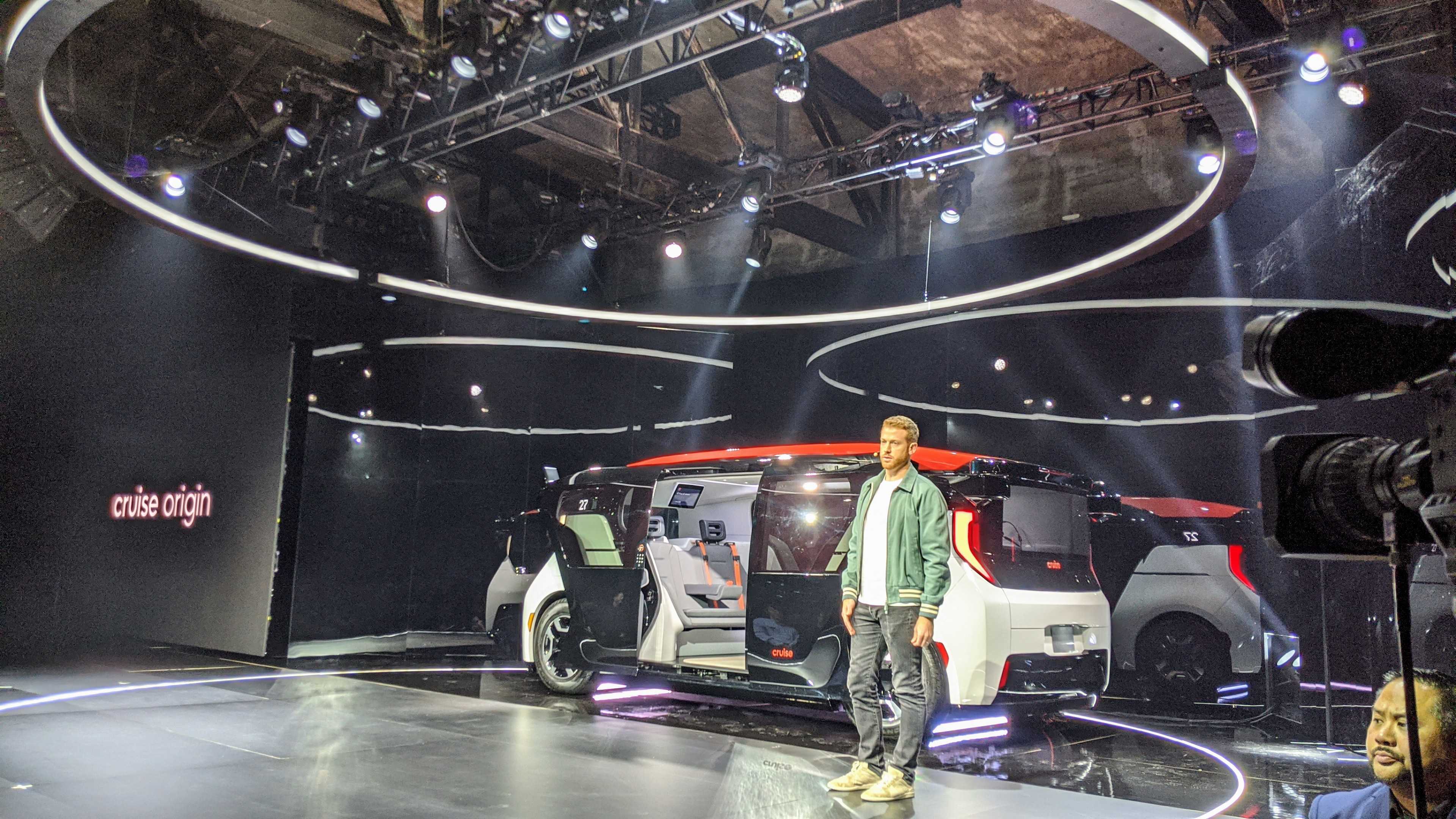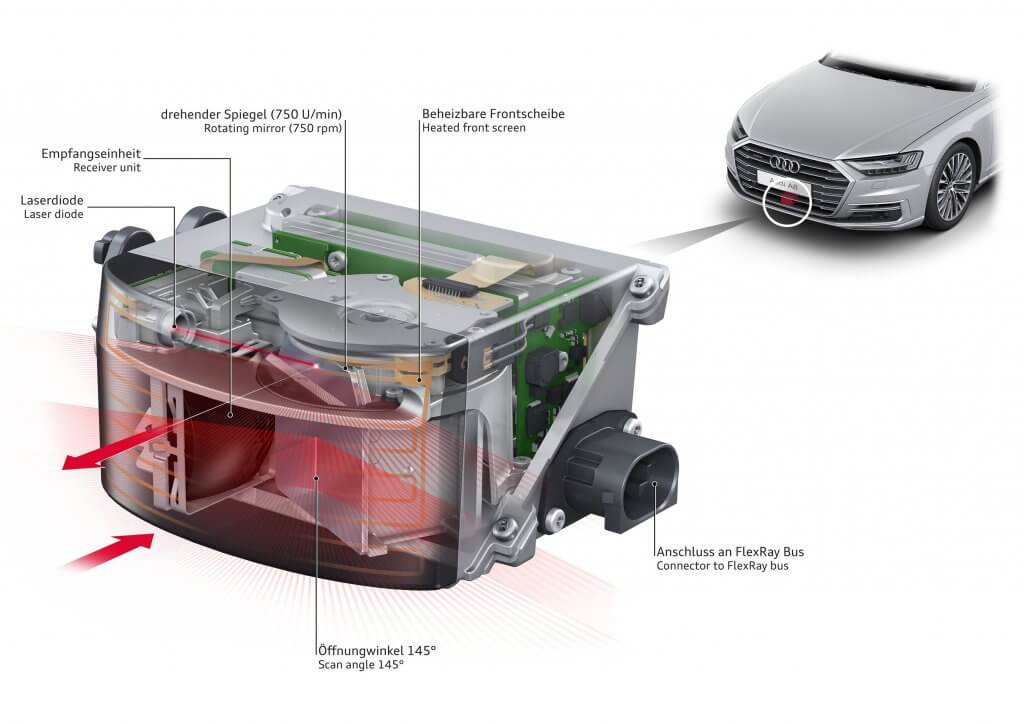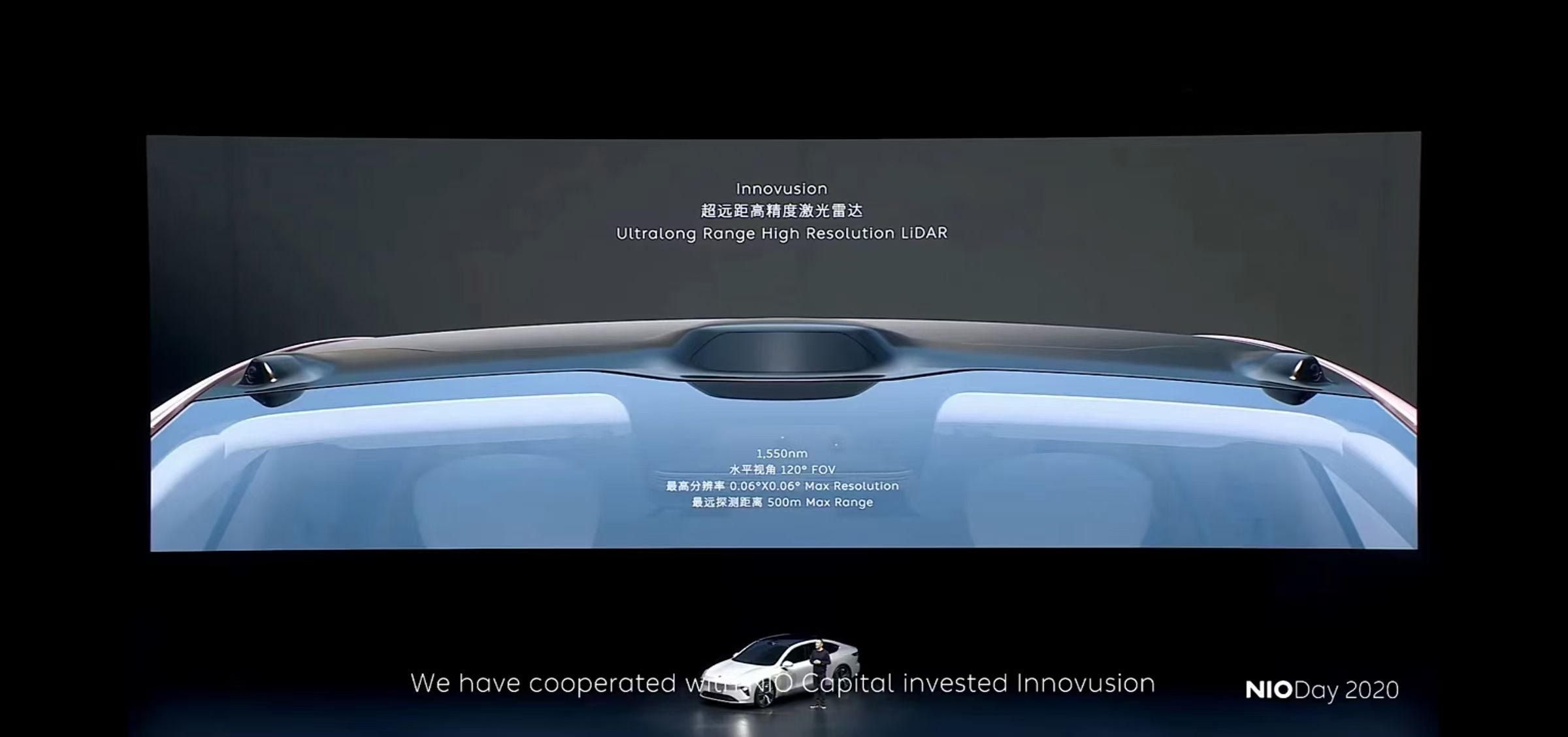Like steering into concrete columns. Design issuesIndividual failures are one thing, but fleet wide failures is a design problem.
Welcome to Tesla Motors Club
Discuss Tesla's Model S, Model 3, Model X, Model Y, Cybertruck, Roadster and More.
Register
Install the app
How to install the app on iOS
You can install our site as a web app on your iOS device by utilizing the Add to Home Screen feature in Safari. Please see this thread for more details on this.
Note: This feature may not be available in some browsers.
-
Want to remove ads? Register an account and login to see fewer ads, and become a Supporting Member to remove almost all ads.
You are using an out of date browser. It may not display this or other websites correctly.
You should upgrade or use an alternative browser.
You should upgrade or use an alternative browser.
FSD V GM CRUISE
- Thread starter Russell B
- Start date
sleepydoc
Well-Known Member
It's making things slow for Tesla, but I agree with their approach to rely less on mapping data for precisely this reason. If an autonomous device relies heavily on external data to work, not only is it not truly autonomous, you've created a critical failure point and also committed to continuous upgrades of data source. As soon as the data is out of date your autonomous system doesn't work.Sadly this kind of thing doesn't bode well for any autonomous vehicle.
People don't realize how hard it is to make things free of bugs or issues. In fact I reckon that things of this nature will be almost a daily occurrence with widespread autonomous vehicle adoption.
When's the last time anyone used any complicated electronic device that didn't occasionally fail.
Exactly! Clouds go down. How would you like to be flying on an airplane that REQUIRED external data.It's making things slow for Tesla, but I agree with their approach to rely less on mapping data for precisely this reason. If an autonomous device relies heavily on external data to work, not only is it not truly autonomous, you've created a critical failure point and also committed to continuous upgrades of data source. As soon as the data is out of date your autonomous system doesn't work.
TresLA
Member
GM, Waymo, and Tesla are all different approaches. It’s hard to compare because Tesla’s goal is L5 (skipping L3 & L4 apparently) using very little and “cheap” hardware. GM & Waymo (although not the same as each other either) are pushing L4 using hardware consumer’s can’t get on their own cars and can’t afford (pricing estimates of the hardware on their cars are pretty astronomical).
This is wrong, consumer cars do have those sensors. If you are talking about sensor configuration, then a robotaxi does not necessarily have to have the same sensor configuration as a consumer car. But some high-end cars have had at least 1 lidar and some radars and camera combination.GM, Waymo, and Tesla are all different approaches. It’s hard to compare because Tesla’s goal is L5 (skipping L3 & L4 apparently) using very little and “cheap” hardware. GM & Waymo (although not the same as each other either) are pushing L4 using hardware consumer’s can’t get on their own cars and can’t afford (pricing estimates of the hardware on their cars are pretty astronomical).
TresLA
Member
It sounds like you misunderstand. Consumer cars may have a (one) LiDAR or even another, but you don’t see spinning tumors on car corners/edges and roof racks of hardware on consumer purchased vehicles. So far, that’s what has been required for L4 city streets self driving.This is wrong, consumer cars do have those sensors. If you are talking about sensor configuration, then a robotaxi does not necessarily have to have the same sensor configuration as a consumer car. But some high-end cars have had at least 1 lidar and some radars and camera combination.
From: Waymo CEO Says Tesla Is Not A Competitor, Gives Estimated Cost Of Autonomous Vehicles
Krafcik made the point, as some analysts predict autonomous vehicle technology will be too expensive to adopt en masse.
sleepydoc
Well-Known Member
From that article,It sounds like you misunderstand. Consumer cars may have a (one) LiDAR or even another, but you don’t see spinning tumors on car corners/edges and roof racks of hardware on consumer purchased vehicles. So far, that’s what has been required for L4 city streets self driving.
From: Waymo CEO Says Tesla Is Not A Competitor, Gives Estimated Cost Of Autonomous Vehicles
“If we equip a Chrysler Pacifica Van or a Jaguar I-Pace with our sensors and computers, it costs no more than a moderately equipped Mercedes S-Class” then “A moderately equipped Mercedes Benz S-Class retails around $180,000 in the U.S”
A Chrysler Pacifica costs between $37k ~ 53k. That would put the cost of the sensor package at about $130-140k. Yikes! Clearly, when just the sensors cost 3-4x the cost of an average car it’s not going to be feasible for the mass market. It’s also hard to compare the two packages when just the sensor package costs twice as much as a Model Y.
The bigger question is whether FSD is feasible without LIDAR, etc. Tesla is banking that it is feasible with cameras alone but it may be that you actually need more expensive sensors to make it work. We shall see.
Right, or you can take your GM Cruize to some other random city and its exactly the same scearnio/situation. Except it isnt, because the Cruize is geofenced, and will just sit there and sulk. So I'm not sure the post was as illogical as you think.Not comparable? Its in ~70% of SF. Take your tesla to SF and its exactly the same scenario/situation.
Typical illogical talking points from Tesla fans
The point, of course, is that Cruize (and Waymo) drive very well in very restricted areas, while FSD beta drives moderately well everywhere. And we are watching a race between Cruize/Waymo expanding their coverage, and Tesla improving their driving fidelity. And, of course, no-one knows who will win that race.
Daniel in SD
(supervised)
How much does a Cybertruck cost? Probably 100's of millions of dollars! I predict Tesla will be able to bring down the cost though.From that article,
“If we equip a Chrysler Pacifica Van or a Jaguar I-Pace with our sensors and computers, it costs no more than a moderately equipped Mercedes S-Class” then “A moderately equipped Mercedes Benz S-Class retails around $180,000 in the U.S”
A Chrysler Pacifica costs between $37k ~ 53k. That would put the cost of the sensor package at about $130-140k. Yikes! Clearly, when just the sensors cost 3-4x the cost of an average car it’s not going to be feasible for the mass market. It’s also hard to compare the two packages when just the sensor package costs twice as much as a Model Y.
The bigger question is whether FSD is feasible without LIDAR, etc. Tesla is banking that it is feasible with cameras alone but it may be that you actually need more expensive sensors to make it work. We shall see.
Anyway, the Cruise Origin, the production robotaxi will be produced for “for roughly half the cost of what a conventional electric SUV costs today.” (though from what I gather they were comparing it to a Model X, Model Y wasn't out then).

Cruise unveils Origin, an electric driverless vehicle designed for sharing | TechCrunch
Cruise unveiled Tuesday evening a "production ready" driverless vehicle called Origin, the product of a multi-year collaboration with parent company GM
I did not misunderstand. You said;It sounds like you misunderstand. Consumer cars may have a (one) LiDAR or even another, but you don’t see spinning tumors on car corners/edges and roof racks of hardware on consumer purchased vehicles. So far, that’s what has been required for L4 city streets self driving.
From: Waymo CEO Says Tesla Is Not A Competitor, Gives Estimated Cost Of Autonomous Vehicles
And that is wrong. Consumer vehicles do use the same hardware as GM and Waymo use just different configurations. Robo-taxis and consumer vehicles do not have to use the same sensor configuration. L4 on city streets in consumer vehicles is not ready and will not be ready for years but for things like robust D2D L2 and L3 systems we will see in the next couple of years, there are different types of Lidars and for consumer vehicles;GM, Waymo, and Tesla are all different approaches. It’s hard to compare because Tesla’s goal is L5 (skipping L3 & L4 apparently) using very little and “cheap” hardware. GM & Waymo (although not the same as each other either) are pushing L4 using hardware consumer’s can’t get on their own cars and can’t afford (pricing estimates of the hardware on their cars are pretty astronomical).
Audi has been using Valeo Scalar Lidar which spins but is placed in the front grill. It is lower resolution compared to something Waymo would use but is estimated to cost $600. Mercedes will be using the 2nd generation of Valeo in their L3 systems mounted in the front grill.

NIO will use Innovusion Falcon which comes standard in their ET7 which cost not more than ~$80K

Volvo will use Luminar LiDAR in their sensor configuration for driver assist and ADS. Consumer cars will use Solid State or Flash Lidars and not the top spinning lidar like robo-taxis. It does not really matter what a robo-taxi looks like, and sensor configuration and cost is less of an issue there.
They are talking about cost of systems that are not being produced at scale yet. Mercedes Drive Pilot which comes with 1 front facing Lidar cost $5300 on the S-Class, and $7900 on the EQS. Consumer cars will not have the same sensor configuration as a robo-taxi fleet operated by a company like Cruise or Waymo.The bigger question is whether FSD is feasible without LIDAR, etc. Tesla is banking that it is feasible with cameras alone but it may be that you actually need more expensive sensors to make it work. We shall see.
I am not a engineer. But even I...a regular joe can tell you. The cameras on Teslas right now? Will NOT be enough to achieve Robotaxi level FSD capabilities.The bigger question is whether FSD is feasible without LIDAR, etc. Tesla is banking that it is feasible with cameras alone but it may be that you actually need more expensive sensors to make it work. We shall see.
Mark my words here. Now
Dewg
Active Member
I agree with you. I'm impressed what it can do with the low-res cameras right now, but true full-self-driving (L4 and L5) will require more advanced hardware. If Tesla's vision-only system ends up being a good solution, it will need higher res cameras, possibly more of them, and a faster computer system to process the extra data. Retrofitting existing HW3 cars with new cameras and CPUs is hopefully something that's feasible. Otherwise, existing Tesla owners will be limited to L2 for the life of their vehicle.I am not a engineer. But even I...a regular joe can tell you. The cameras on Teslas right now? Will NOT be enough to achieve Robotaxi level FSD capabilities.
Mark my words here. Now
FloridaJohn
Member
Otherwise, existing Tesla owners will be limited to L2 for the life of their vehicle.
Start preparing. This is where we are all headed.
Dewg
Active Member
Many of the comments here remind me of the old joke about the pessimist and the optimist.Start preparing. This is where we are all headed.
The pessimist says "Things are terrible, they can't possibly get any worse." And the optimist says "Oh yes they can."
newberry94005
Member
I'm not an engineer either... so I... a regular joe will not pretend to know more than engineers that work on this problem every dayI am not a engineer. But even I...a regular joe can tell you. The cameras on Teslas right now? Will NOT be enough to achieve Robotaxi level FSD capabilities.
Mark my words here. Now
That doesn't mean I'm convinced the current cameras are going to be enough but I don't have any evidence/proof that *this* is the reason L5 won't happen. There are so many other things that can be bottlenecks (planner, decision heuristics, NN training, CPU capabilities, etc...) instead of cameras.
S4WRXTTCS
Well-Known Member
You used an example of something that is highly dependent on external data.Exactly! Clouds go down. How would you like to be flying on an airplane that REQUIRED external data.
Sure planes don't fly out of the sky, but planes get grounded.
Any little thing that causes a safety issue will get planes grounded, and people can't fly.
I have little doubt that in the future human drivers will be too scared to drive in a snowstorm, and the car won't drive itself because of weather. So they'll have to find a car that still has steering controls, and then some old geezer who still knows how to actually drive.
sleepydoc
Well-Known Member
That sounds a lot like ‘I’m not a doctor, but I’ve read a bunch of stuff on the internet so I know as much or more than a doctor and think I’m qualified to do their job.’I am not a engineer. But even I...a regular joe can tell you. The cameras on Teslas right now? Will NOT be enough to achieve Robotaxi level FSD capabilities.
Mark my words here. Now
I notice you did not disagree. hahahaThat sounds a lot like ‘I’m not a doctor, but I’ve read a bunch of stuff on the internet so I know as much or more than a doctor and think I’m qualified to do their job.’
S4WRXTTCS
Well-Known Member
We all need to make informed decisions so we don't get swindled by bad actors.That sounds a lot like ‘I’m not a doctor, but I’ve read a bunch of stuff on the internet so I know as much or more than a doctor and think I’m qualified to do their job.’
You're not doing their job by second guessing what one might tell you before you buy their product/services, and seeking out information from industrial experts.
That information can save a person from a lot of bullcrap. But, don't be surprised if people on the internet don't push back on what the industrial experts say.
S4WRXTTCS
Well-Known Member
It's making things slow for Tesla, but I agree with their approach to rely less on mapping data for precisely this reason. If an autonomous device relies heavily on external data to work, not only is it not truly autonomous, you've created a critical failure point and also committed to continuous upgrades of data source. As soon as the data is out of date your autonomous system doesn't work.
A lot of this comes down to what you want out of your autonomous system.
Do you want a scalable system that can get safer as new technology and safe guards are put in place, and can also scale the capacity of our roadways?
To really scale you're going to have dependencies on external data, and you absolutely will have continuous upgrades.
Now I do agree that when the external connectivity is lost that an autonomous vehicle can't crash. That there has to be some offline fallback where it is still capable of pulling over or finding the next exit to get off the road.
Similar threads
- Replies
- 45
- Views
- 4K
- Replies
- 0
- Views
- 1K
- Replies
- 8
- Views
- 912
- Replies
- 215
- Views
- 6K


